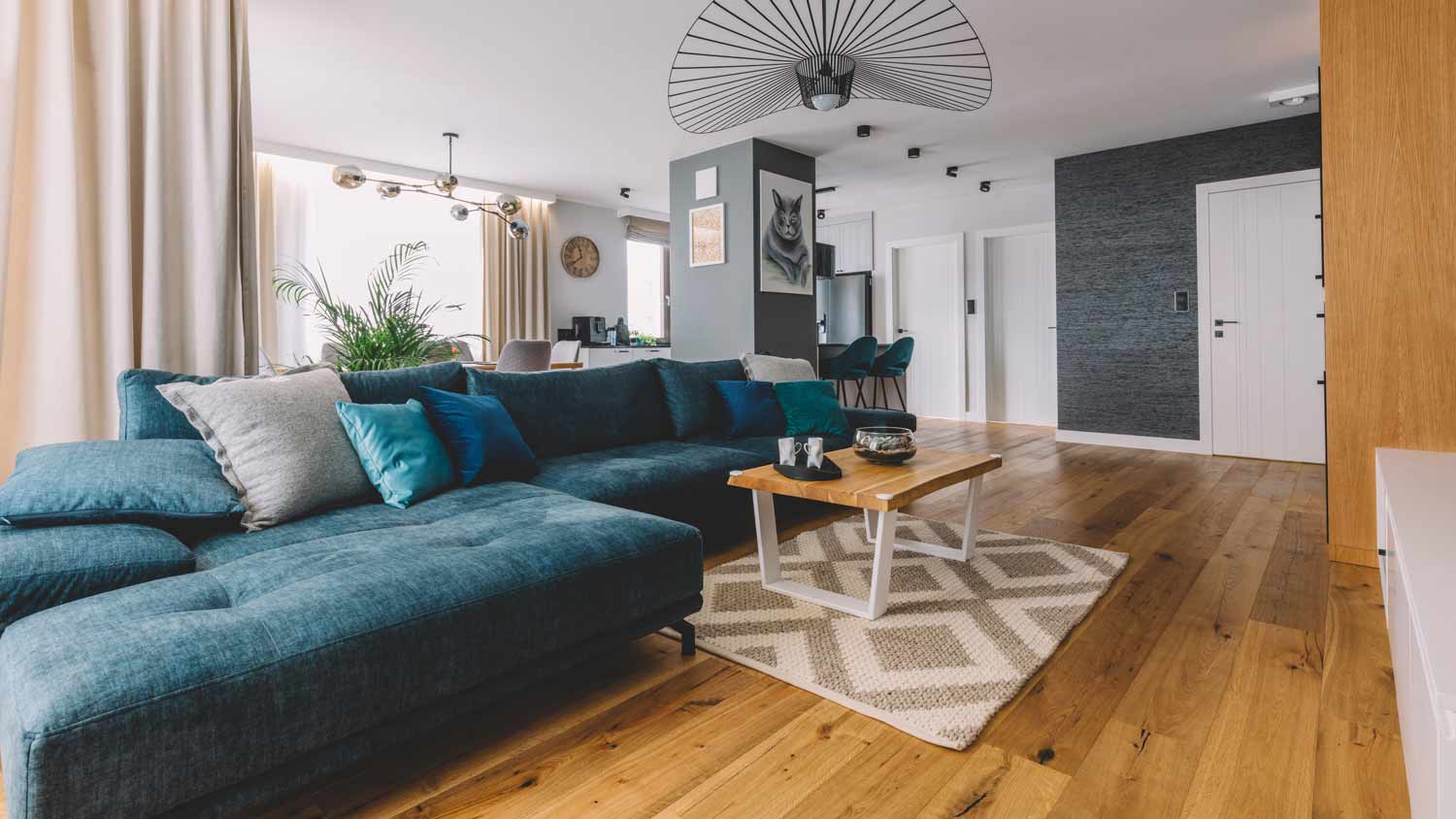What Type of Plywood Is Best for Subflooring?
Not all plywood is created equal—learn about the best plywood options for subfloors


Plywood may not be the prettiest building material, but it is necessary. It makes up the solid surface over flooring joists and is the base layer for whatever flooring you plan to put on top. Because it is such a foundational material and there are so many options, you need to choose carefully when deciding what type of plywood to use for subfloor installation.
There are several types of subfloor available, but plywood is the standard for a reason. Appearing to be made of solid wood, plywood is actually layers, or “plies”, of wood that are laid in opposite directions for added strength and stability. Plywood comes in sheets or boards and is very durable and easy to install. Below are some of the best types of plywood subflooring on the market.
Types of Plywood for Subflooring
1. CDX
CDX plywood is the most common plywood used for subflooring. It is usually more affordable because it is rougher and has more imperfections than other types of plywood. However, since subflooring is almost always covered and rarely visible, the way it looks should not matter. Many contractors and homeowners find CDX sheet plywood to be a good way to save money without compromising the quality of a job.
Why is it called CDX? Plywood is given letter grades for appearance, but these grades do not reflect the quality, so CDX plywood is just as strong as higher graded plywood. CDX plywood has two unsanded sides—one that is a C grade (with an average surface appearance) and one with a D grade (for small holes and patches). X stands for the moisture-resistant glue that holds the boards together.
Cost: $1.50 to $3 per square foot
Best for: Most subfloor installations, bathrooms, kitchens, laundry rooms, areas with mild humidity, garages used for storage, external subflooring
Pros:
Strong and durable
Lighter weight than other materials
Relatively low cost
Stands up better to moisture and humidity than OSB and regular plywood when used with a vapor barrier
Cons:
Can be less water resistant than other types
Limited panel sizes available
2. Tongue-and-Groove
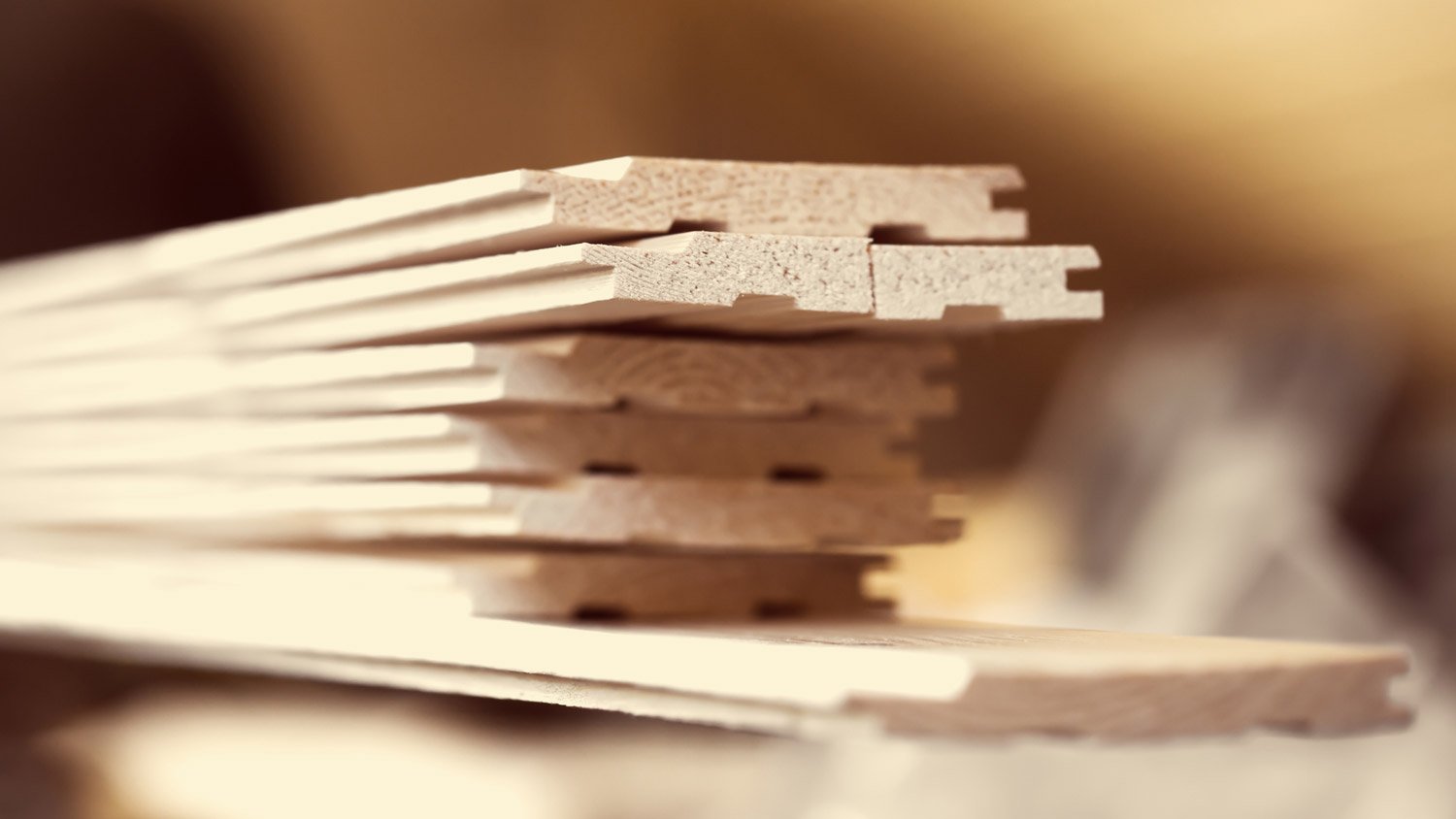
Like any tongue-and-groove flooring, tongue-and-groove subflooring is composed of boards that fit snugly together by fitting one edge with a protruding ridge into a groove in the board next to it. While installation can take longer and is more expensive than sheet plywood, tongue-and-groove plywood is a popular option because boards fit tightly together and may be glued. This prevents squeaks that are common when sheet plywood edges, which just set together, rub against each other as people walk across the flooring surface.
Cost: $1.60 to $4 per square foot
Best for: Most subfloor installations, garages used for storage
Pros:
Strong and stiff flooring base
Interlocking board edges prevent shifting and squeaking
Boards can be glued together for even greater strength and tighter fit
Cons:
Takes longer to install than plywood sheets
More expensive than sheet plywood
3. Marine Plywood
Marine-grade plywood is a premium quality plywood made of hardwoods. It is strong, lightweight, and has no defects, such as voids within the layers that other types of plywood are prone to. Marine plywood is pressure-treated, and layers are affixed together with waterproof glue, so it holds its strength and shape even when exposed to moisture and heat.
Cost: $2 to $4 per square foot
Best for: Moist environments, such as kitchen and bathroom subflooring
Pros:
Made of 100% hardwood
Comes in a variety of grades, including high grade that is very good quality
Made of five or more layers
Lightweight, strong, and defect-free
Considered void-free, since it has no holes inside the plywood layers
Layers are connected with waterproof glue that will not fail when exposed to moisture or heat.
Cons:
Not waterproof or rot-resistant
More expensive than plywood, CDX, and OSB
4. Plywood Sheathing
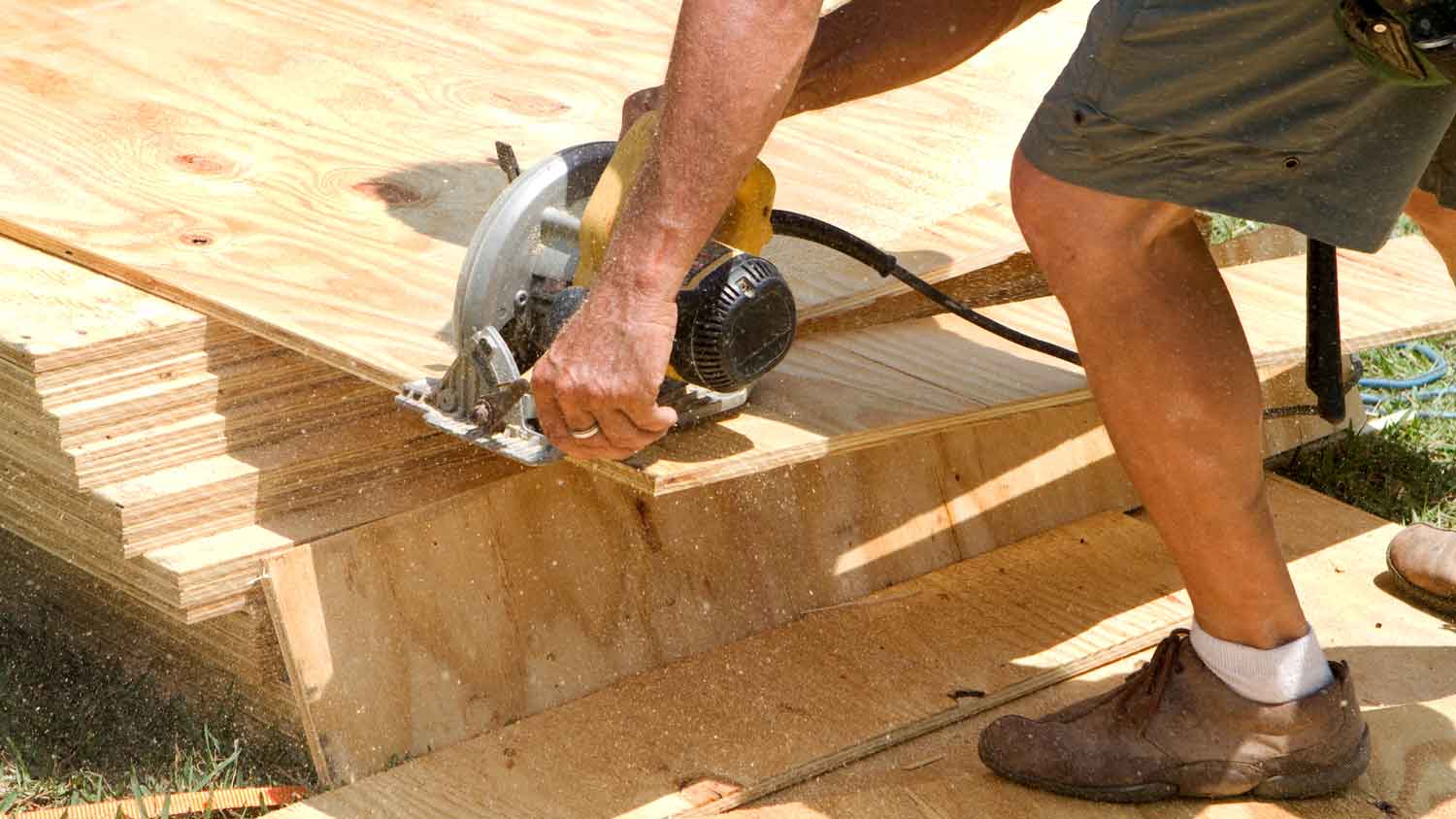
Also called structural plywood, plywood sheathing is a strong, inexpensive, and unfinished type of plywood. Unlike CDX plywood, it does not contain water-resistant glue between the layers.
Cost: $0.50 to $2 per square foot
Best for: Most structural subfloor installations
Pros:
Strong and durable
It can cost the least of all types of plywood, depending on grade.
Multiple grades available, from A through D, with A having a smooth sanded surface that is nearly free of defects, to D, which is unsanded with knot holes and some unrepaired defects. Two-sided boards often have different grades on opposite sides.
Edges will not swell if exposed to moisture, unlike OSB.
Cons:
Not finished, so should not be used in areas where it will be visible
Alternative Subflooring Materials and Options
Oriented Strand Board (OSB)
OSB, also known as chipboard, is not a true plywood. Instead, it is a sheet board composed of large flakes of wood that are glued together to make a solid surface. When comparing OSB to plywood, OSB is heavier, stronger, and more affordable, but it swells more when exposed to moisture.
Cost: $1.50 to $2.50 per square foot
Best for: Jobs that do not require solid plywood, tight budgets
Pros:
Lower cost
Easy installation
Stronger than comparable thicknesses of plywood
Up to 50 layers of wood chips adhered together for a more solid, uniform board
Available as tongue-and-groove boards and oversized panel boards
Made from leftover wood material and smaller diameter trees, so may be more environmentally friendly than hardwood
Cons:
More flexible, less strong, and less moisture-resistant than plywood
Edges are unfinished, so they will swell when exposed to water and not go back to their original shape.
Does not hold fasteners and screws as well as plywood of the same thickness
May off-gas more volatile organic compounds (VOCs) because it contains added glues
Harder to find at home improvement stores, and may only be available at building supply stores
Concrete
Most common in basements and single-story homes with no basements, concrete slabs can be a type of subflooring. If you are laying tile or stone flooring, you can usually install them right on top of concrete. However, if you are planning to install carpet or wood flooring, you will need to put an underlayment or moisture barrier on top of the concrete first, as concrete is not impervious to moisture and will wick up water from the ground.
Cost: $6 to $8 per square foot
Best for: Garages used to park vehicles, basements, single-story homes on concrete slabs, under waterproof flooring
Pros:
Solid, durable, and smooth surface for installing tile and stone
Does not contain harmful VOCs
Inhibits mold, mildew, and odors
Affordable
Long-lasting
Can be exposed and finished as a durable flooring
Cons:
Conducts cold from the ground underneath
Not waterproof or impervious to water or water vapor wicking up from the ground
Most types of flooring installed over concrete require an underlayment or moisture barrier.
Not recommended as a base for hardwood flooring, even with moisture barrier
Expensive to repair or replace
Most Common Subflooring Plywood Thickness and Sizes
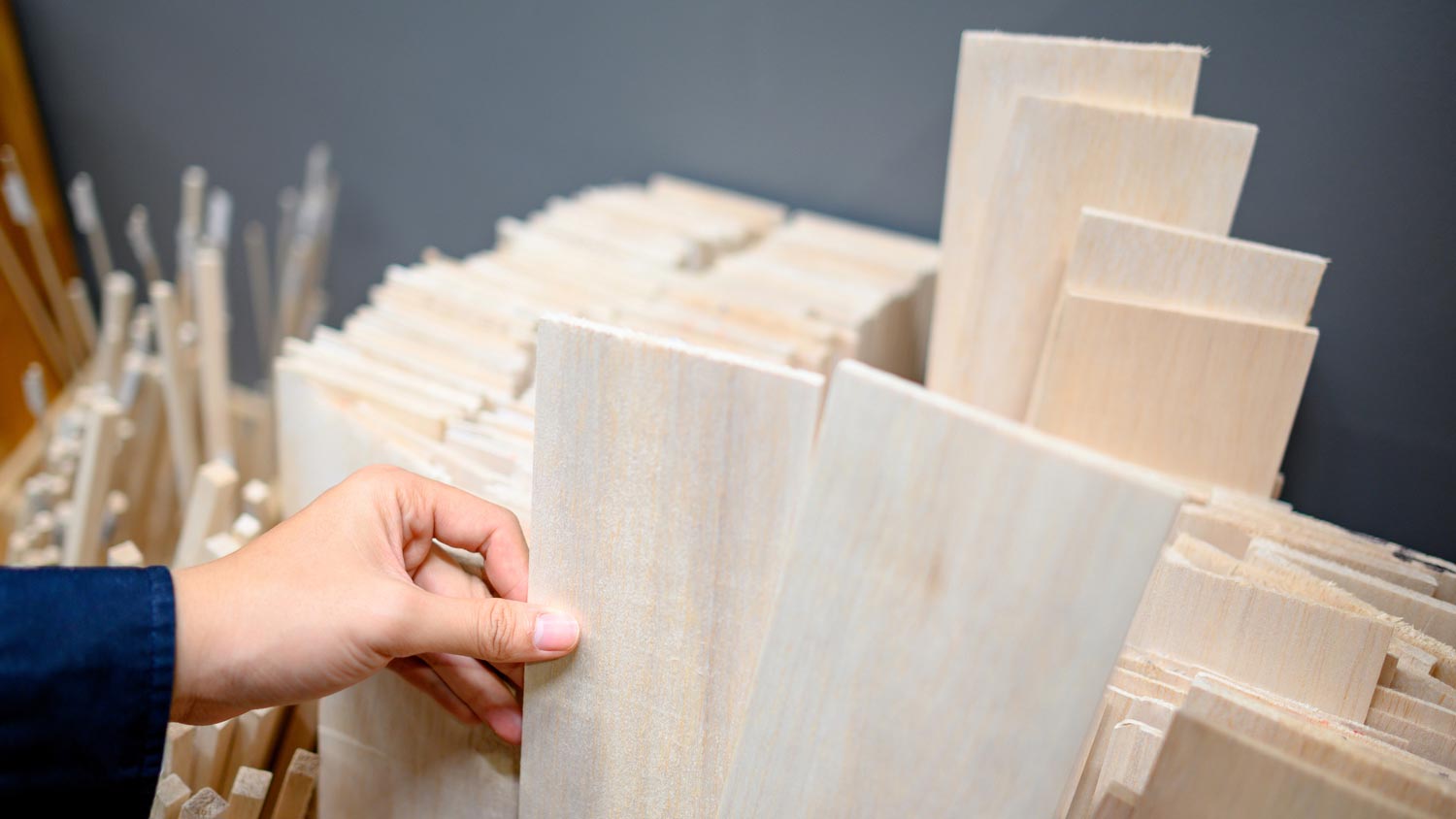
The thickness of your subflooring is important because it impacts how your floor performs and wears. You will get the best results by carefully choosing the right thickness of subflooring based on the spacing of your flooring joists, the type of flooring you plan to install on top, the amount of traffic the area gets, and your budget.
1. Half-Inch Plywood
The most common plywood thickness used as subflooring, half-inch plywood is a solid choice for most homes with standard-width flooring joists. Because of the difficulty and cost to replace subflooring, however, be sure that half-inch plywood is strong enough for your job before installing it.
Cost: $1.30 to $2 per square foot
Best for: Most average subflooring jobs, buildings with joists spaced 16 inches or narrower
Pros:
Easy to find
Affordable
Comes in all standard plywood sheet sizes
Cons:
Not suggested for placement over floor joists spaced wider than 16 inches
Not as soundproof or insulative as thicker subflooring
May not provide a solid enough foundation for some types of flooring in high-traffic areas, such as tile in an entryway
2. Three-Quarter-Inch Plywood
This thicker plywood is a smart choice for areas and flooring choices that need a more supportive base. It stands as a middle point between average and thick subflooring in terms of cost and usefulness.
Cost: $1.50 to $2.50 per square foot
Best for: Floors with wider joists, under flooring that needs more support, high-traffic areas
Pros:
Can be used on top of joists spaced wider than 16 inches
Provides a more solid foundation than half-inch plywood
Cons:
More expensive than thinner plywood
May limit vertical space for underlayment options
3. Five-Eighths-Inch Plywood
On the upper end of plywood thickness, ⅝-inch plywood is more expensive but offers additional support for heavy flooring, high-traffic areas, and widely spaced joists, while still being less expensive and more maneuverable than the thickest plywood sheets.
Cost: $1.80 to $2.80 per square foot
Best for: Homes with wider joists, under fragile flooring, under rooms with heavy furniture and appliances
Pros:
Compatible with widely spaced joists
A solid foundation for all types of flooring, including flooring that is fragile or prone to cracking, such as ceramic and porcelain tile, and natural stone, like travertine, marble, granite, and limestone
May give more support to large areas of floor space that support heavy appliances and furniture
Offers increased insulation value
Cons:
More expensive than thinner boards
May limit vertical space for underlayment options
Heavy to maneuver and install
4. Seven-Eighths-Inch Plywood
Coming just short of a full inch in thickness, ⅞-inch plywood offers a lot of support for high-traffic areas and heavy flooring options. Its cost and thickness can be deterrents, though, so it is only recommended in situations where thicker subflooring is required.
Cost: $2 to $3 per square foot
Best for: Areas that require thick subflooring for support, insulation, and protection of fragile flooring choices
Pros:
Supportive foundation on top of widely spaced joists
A solid foundation for all types of flooring, including fragile tile and natural stone that needs a very supportive subfloor
Offers the most insulation value against sound and temperature
Good for rooms that need more flooring support for heavy furniture like bathtubs or a lot of furniture, or that host large gatherings of people or excessive movement
Cons:
More expensive per square foot
May limit vertical space for underlayment options
Heavy to maneuver and install
How to Choose the Best Plywood for Your Job
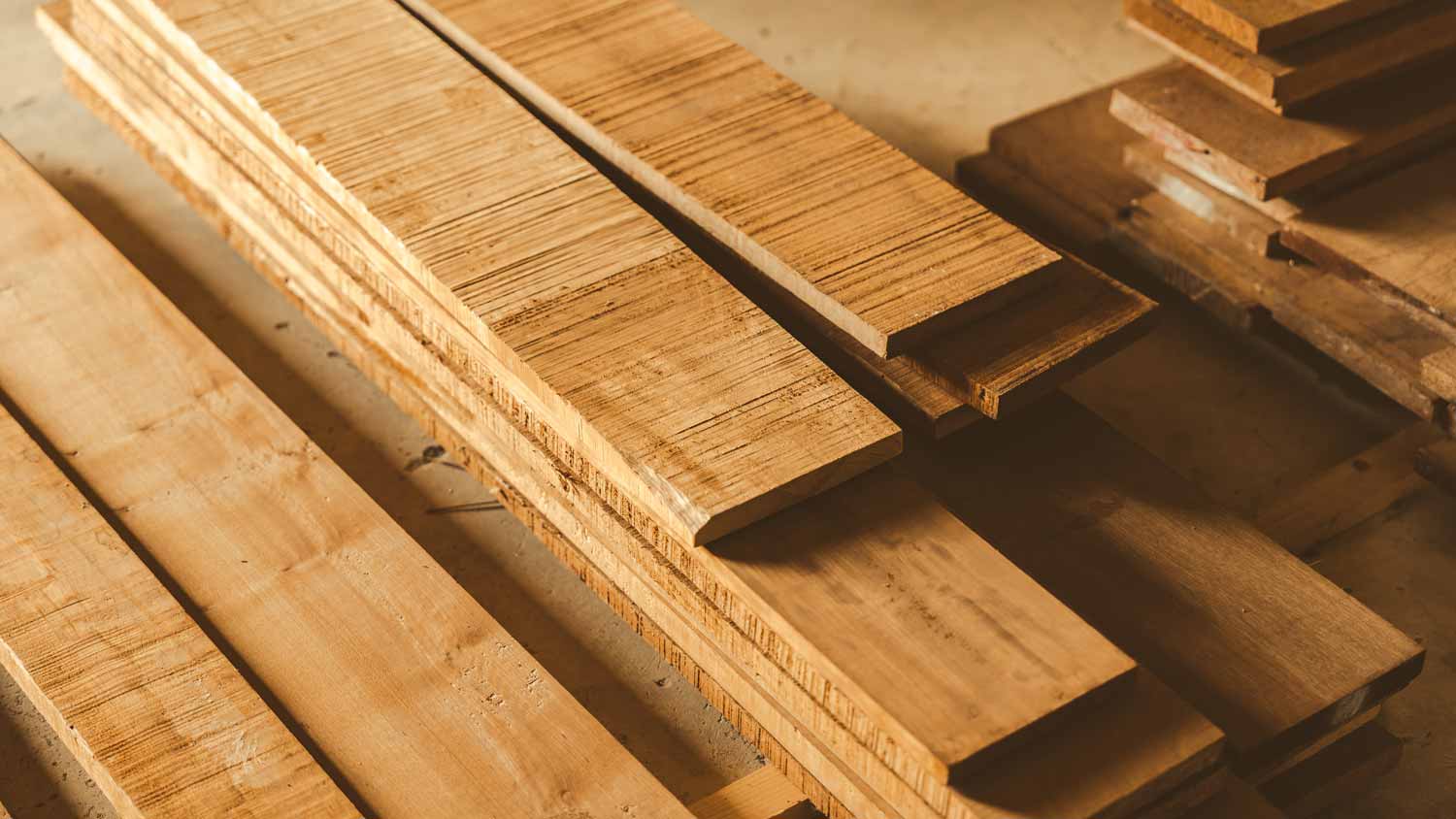
There are several factors to consider when deciding which plywood is best for your subflooring needs. If you need help choosing the right subfloor materials, call a local flooring company.
Location: Where you are installing the plywood, how you use that space, the unique conditions of the space (i.e., likelihood of getting wet, the space between flooring joists, etc.), and how much traffic the area gets will all help to determine what type and size of plywood subfloor is best.
Flooring: Type of flooring matters. Carpet, linoleum, and other flexible materials will not crack or break if laid on a slightly more flexible subflooring, but tile, stone, and grouted floors need a perfectly solid subfloor to keep them flat and prevent cracking and chipping. Evaluate your flooring options and choose the subflooring type and thickness that offers the right support.
Budget: Plywood is a relatively inexpensive building material. The cost to install plywood subflooring is generally about the same, regardless of which material you choose. If your budget is tight, however, and you have a large area to cover, you may want to consider OSB or less expensive alternatives, as long as they are a good fit for your specific project. Subflooring costs add up quickly, so buying a heavier subfloor than you need can unnecessarily increase your budget.
Certification: Certified plywood is proven to be better quality than other types. Look for ISI certification that denotes quality, or choose plywood that is certified by the Forest Stewardship Council (FSC) or Sustainable Forestry Initiative (SFI) if environmental sustainability is important to you.
Pest-Proof: If you live in an area with termites or wood borers, choose among plywood brands that guarantee against pests.

.jpg?impolicy=leadImage)

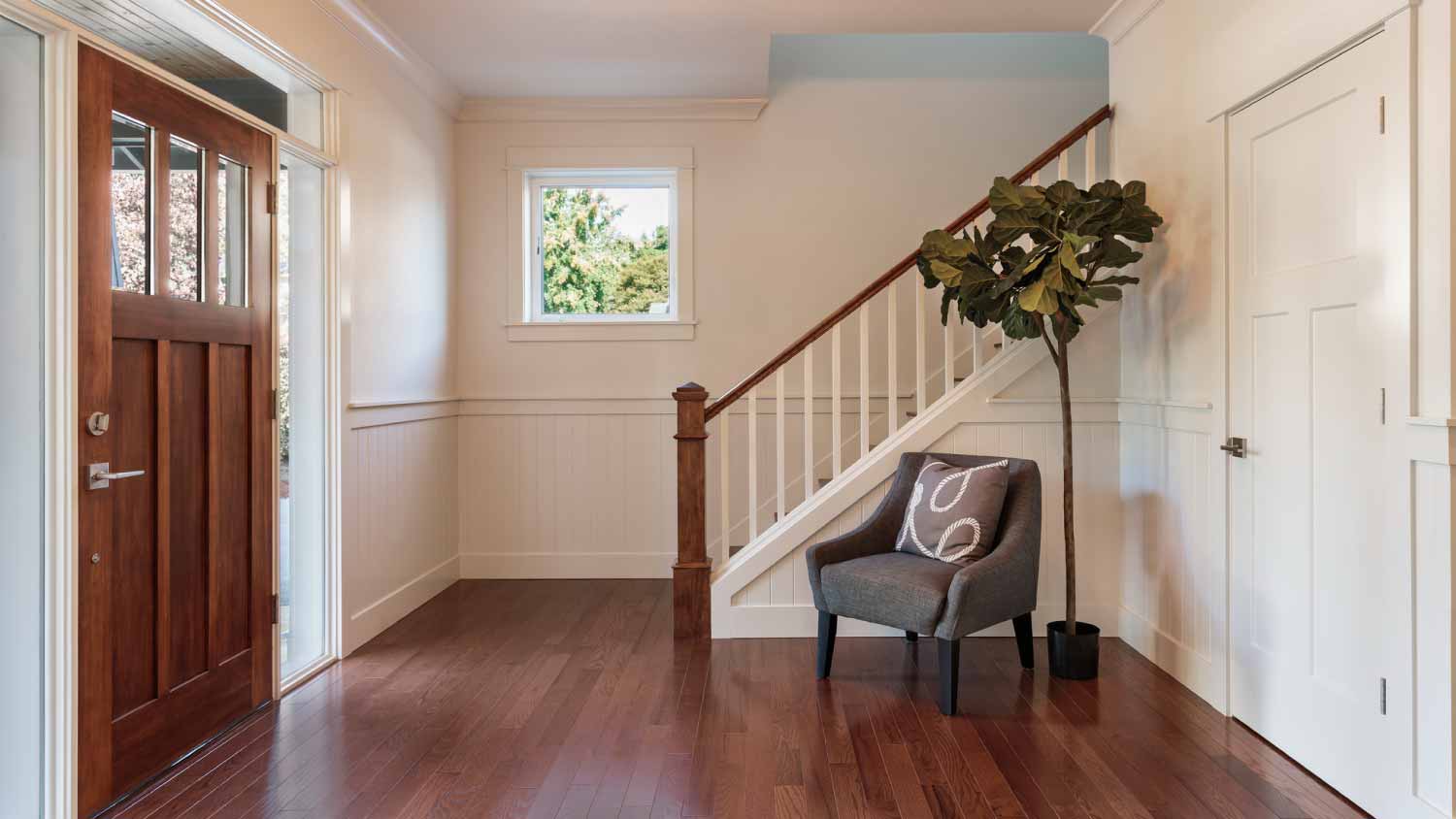

- How Much Does It Cost to Install Plywood Subflooring?
- How to Prevent Squeaky Floors: 6 Subflooring Installation Tips That Can Help
- How to Replace a Subfloor: The Complete DIY Guide
- 5 Drywall Alternatives for Your Garage Walls
- 11 Types of Flooring to Consider for Your Home
- 7 Budget-Friendly Kitchen Flooring Options for Every Style
- Estimate Your Flooring Cost With These Factors
- What Types of Flooring Can Be Installed Over Ceramic Tile?
- How to Install Sheet Vinyl Flooring Like a Pro
- The Best Types of Flooring for Your Home Gym



